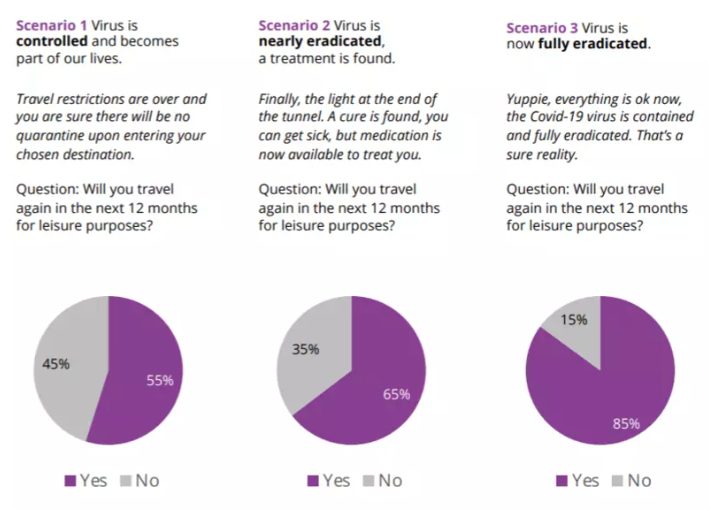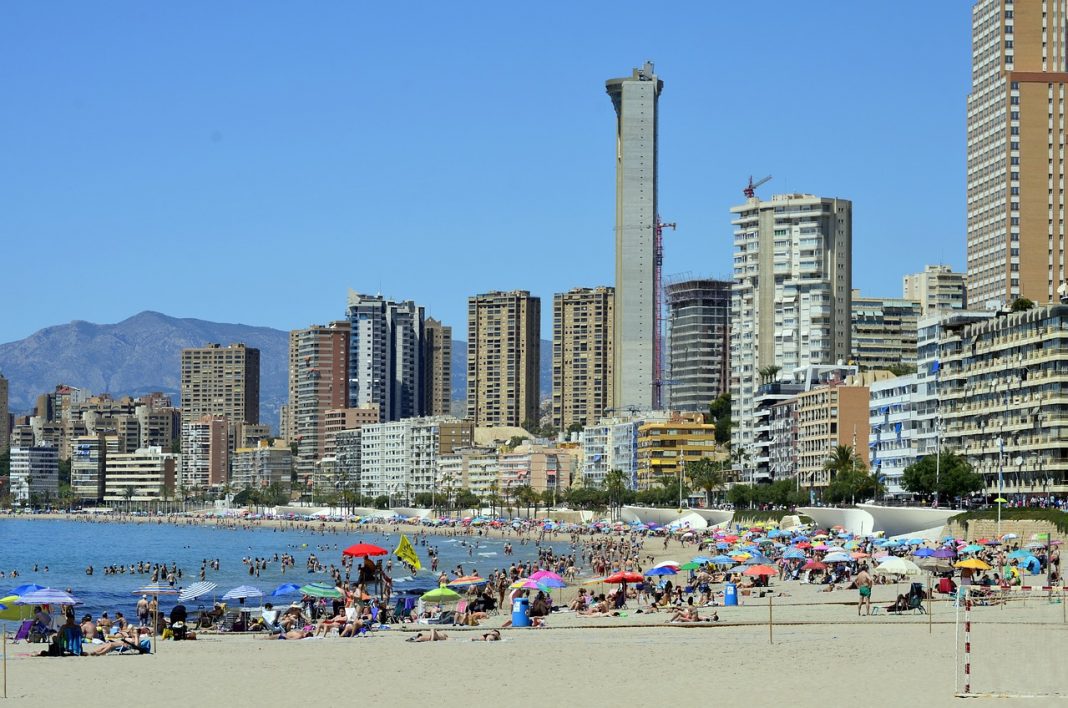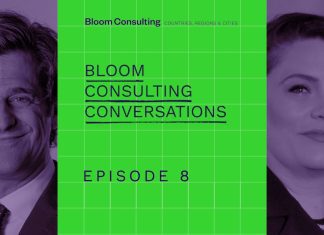As lockdowns lift and the pandemic slows in many parts of the world, quarantine-weary countries have one question: When can tourists travel again – and where will they chose to go? The answer, like the COVID-19 crisis, will be complex, blending both fact and emotion.
For some countries, such as those in hard-hit parts of Latin America and other areas, it may also depend on an individual country’s ability to control the virus’ spread. Some countries have seen rapid rates of transmission and, in some cases, infections have spread from big cities to small towns. Where countries are planning to reopen to tourists, officials from the World Health Organization have urged countries to reconsider until infections are under control.
Of course, some countries have managed to contain the virus, but these countries will still face barriers to building back their tourism industries given tourists’ new reluctance to travel.
As countries navigate their particular challenges, here are some factors to consider:
Understanding travellers’ new needs
A study by Bloom Consulting and D2-Analytics (Data from April 2020) assessed people’s potential behaviours for the coming year by proposing a range of different scenarios for travel. (While this poll was taken in the Spring, the virus continues to bring uncertainty to travellers and will until it is completely eradicated.)
In the first scenario, respondents were told the virus was controlled and has become a part of our lives. Although travel restrictions would not require quarantines when entering chosen destinations, 45% said they still wouldn’t be ready for a leisure trip.
In the second scenario, the virus was nearly eradicated, but a treatment had been developed. Despite access to the medication, 35% polled said they’d stay in.
In the third and last potential scenario, the virus was fully eradicated. In this case, there was no risk of infection from COVID-19 and no restrictions to navigate. Despite these facts, 15% of all tourists polled said they still would not leave their homes for a trip.

Image: Bloom Consulting and D2-Analytics
This question reveals a key travel barrier that did not widely exist in the pre-COVID-19 era: Fear. Some are afraid to be in contact with those possibly infected and, given the choice, would prefer to stay safe in their homes. In fact, 64% of those polled said fear was the main reason they wouldn’t travel in the coming 12 months.
As COVID-19 has brought new sensitivities, it has also changed travel preferences. Nearly half (46%) of all respondents who planned to travel for leisure purposes said they may choose a different destination from the original choice they made prior to the outbreak.
Nearly 39% polled said they may choose less crowded or different types of destinations, ones that have extensive hygiene programs (i.e. application of sanitary measures and initiatives monitoring public health). 8% surveyed said they wouldn’t travel unless to visit their families abroad. Still others said they’d wait for a treatment or vaccine.
Thus, the way governments have handled the crisis will play a large role in tourists’ decisions in choosing a destination. More than half of these travellers – 53% – said they’d switch their destination for one that had a good health system. Effective crisis management and low numbers of COVID-19 cases are crucial to these travellers’ decision-making.
Government management is key
Keeping these factors top of mind will be key to communicating the measures in place and developing a sense of safety in tourists in the aftermath of the health crisis. As far as we can see, this crisis won’t vanish in a short period of time. Its impact will cut deep for the long term. Until then, Destination Brands and Destination Marketing Organizations [DMOs] must develop tourism offers that are tailored to tourists’ new needs.
Given the significant impact of public governance perceptions, DMOs must work with governments to establish the fundamental elements that will secure a positive country reputation. This must be done in order to manage the current situation, prepare for the aftermath of the crisis, and anticipate future problems.
Here are some of the key strategies and recommendations that can guide hard-hit countries in Latin America, as well as any country facing the challenges of building back its tourism industry given the changing perceptions regarding target travel audiences:
- Avoid price competition. According to the Bloom Consulting study, only 15% of respondents chose money when asked their main consideration when travelling for leisure purposes. Less crowded destinations and improved healthcare systems are tourists’ main concerns.
As a result, previous tourism strategies must be revisited as they may have become temporarily obsolete, especially in low-cost or mass touristic destinations that rely the most on the US market (i.e. Mexico and Caribbean nations, such as the Dominican Republic). Such areas might need to continue to focus on domestic tourism first and shift attentions to traditional US or Canadian markets in later seasons.
- Redesign and redefine tourism. Tourists’ behaviours and preferences have changed. Tourists will be searching for new and less crowded destinations where they can worry less about COVID-19. In Latin American countries where cases are under control, make sure the brand strategy communicates that the destination is appealing and safe once restrictions lift. The product offer must be adjusted to tourists’ new expectations and needs.
To this end, the World Travel & Tourism Council (WTTC) has launched a “Safe Travels” global safety and hygiene stamp for destinations and their offers. The designation follows protocols backed by the United Nations World Tourism Organization and is based on recommendations from the World Health Organization and the Centers for Disease Control. Mexican destinations such as Quintana Roo and Yucatán are among the locales that have qualified.
Additionally, Uruguay, with comparably low numbers for the region, was selected for the EU’s “safe countries” list of locales with low and declining infection rates. Once borders open, touting inclusion in such lists and the adoption of protocols and programs with third-party certifications can restore tourists’ confidence in destinations and speed the recovery of the industry when responsibly applied.
This is also an opportunity for smaller destinations to attract tourists, creating a more balanced flow of travellers to many destinations. Costa Rica, for instance, has won plaudits for its handling of the virus and while its cases recently began to spike, the country has long managed one of the lowest COVID-19 case fatality rates in the region. Should it continue to respond quickly and effectively, travellers could find Costa Rica an appealing option after travel restrictions are lifted in the long term.
- Take health systems into account. Having a solid and reliable healthcare system will have an impact on brand reputation. According to Bloom Consulting and D2 Analytics research, 68% of respondents stated that this crisis is shaping their perceptions of countries.
In this study, countries with the best control of the virus (at the time the poll was taken this Spring), such as New Zealand or South Korea, were perceived most positively. In Latin America, countries like Cuba, with low case numbers at the time of polling, were seen in a more positive light than others with wider transmission. Those results give a sense for how perceptions could evolve with the outbreak, depending on governments’ handling of the virus.
DMOs must monitor and measure perceptions on government actions, activities and policies. They must assess what people value and how they perceive management measures such as lifting travel bans. These perceptions impact tourists’ preferences when choosing a new place to visit.
The brand strategy must consider new types of data (such as infection rates in the immediate term) and a destination’s ability to respond immediately to key changes.
- Plan your crisis management structure. It is essential for DMOs to have a team or a plan in place that is ready to adapt, analyze and respond to a new normal, new scientific developments or any arising crises. The goal is to ensure a long-term, sustainable approach to show people the destination is prepared for any unforeseen events.
Moving forward, fear and uncertainty will be the central factors in a tourists’ decisions, regardless of the rate of transmission in a particular country. These concerns must be accounted for since countries unable to respond to new crises will face a tougher road in rebuilding their tourism sector.
Early in the pandemic, Latin America was mostly a spectator, but countries in Central and South America have been battling the pandemic since. The challenges countries face shift quickly and without warning. Countries, regardless of their transmission phase, must remain vigilant to ensure they can control the virus and their fates to rebuild the tourism sector that’s so important to their economies.
This article was published on the World Economic Forum website in July 2020.
Published on 18.10.2019.










